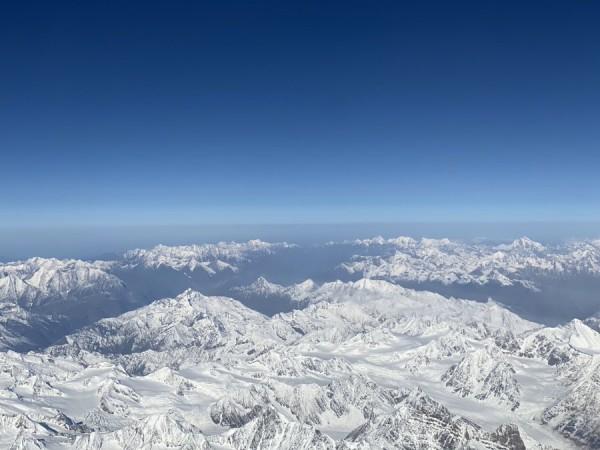
India's announcement about opening the Siachen Glacier, which is also the world's highest battlefield, to tourism is an emphatic geostrategic statement. The declaration of Defence Minister Rajnath Singh during a visit to Ladakh along with Army Chief General Bipin Rawat is unlikely to be ignored by the country's neighbours to the north and west, reports suggest.
Rajnath Singh opened a strategically located bridge across the Shyok River that will provide easy connectivity to the Daulat Beg Oldi sector along the Line of Actual Control (LAC) with China, a report in Livemint says. "Ladakh has tremendous potential in tourism. Better connectivity in Ladakh would certainly bring tourists in large numbers. The Siachen area is now open for tourists and tourism. From Siachen Base Camp to Kumar Post, the entire area has been opened for tourism purposes," Rajntah Singh said in a tweet on Monday.
Pakistan Prime Minister Imran Khan had raised the change of status of Jammu and Kashmir in the United Nations General Assembly (UNGA) where Indian Prime Minister Narendra Modi raised the matter of cross-border terrorism
The Indian move has taken China and Pakistan by surprise and they are yet to react to it. Expeditions to the icy heights of Siachen were being allowed under the Indian Army's supervision from the 1970s until they were discontinued in 1984, following a deterioration in the security situation in the sector.

The frozen frontier of Siachen in the Himalayan trijunction of areas under the control of India, Pakistan and China has been at the centre of border tensions for long. The Indian Army took control of the desolate heights through Operation Meghdoot in 1984 gaining nearly 2,600 sq km of glaciers and overlooking mountain tops. It borders India's Ladakh, Pakistan-occupied Kashmir's Baltistan area and Shakgam Valley that Pakistan surrendered to China and Xinjiang Province. It's also close to the heights of Aksai Chin that China has been occupying since the 1962 war.
Kargil misadventure
There were also reports that the Kargil misadventure of the Pakistan Army in 1999 was a result of General Pervez Musharraf's desire to avenge the slight of India's successful occupation of Siachen, leading to the Kargil war across the Line of Control (LoC). The war kept the world on edge for weeks because of the potential escalation of hostilities between the two nuclear-armed neighbours who had announced successful nuclear tests the previous year.
Sharing a photo of the amazing and beautiful snow capped Himalayas which was taken on the way to Ladakh. If you have plans to visit areas in Ladakh or Siachen, go for Eco-Friendly travel. pic.twitter.com/xnMF4WCqI7
— Rajnath Singh (@rajnathsingh) October 22, 2019
Ladakh is set to become a union territory when the order bifurcating Jammu and Kashmir whose statehood and special status were removed with the abrogation of Articles 370 and 35A of Constitution is set to take effect on October 31. Pakistan and China had raised an objection to the change of status of Jammu and Kashmir. China claims parts of Ladakh where the international border is not well demarcated. Army personnel of India and China have scuffled several times over the LAC in the region. Pakistan Prime Minister Imran Khan had raised the change of status of Jammu and Kashmir in the United Nations General Assembly (UNGA) where Indian Prime Minister Narendra Modi raised the issue of cross-border terrorism.
In June this year, Rajnath Singh, accompanied by Gen Rawat, had visited Siachen and praised the "tenacious resolve and unstinting commitment" of the soldiers deployed in the region. He had undertaken an aerial reconnaissance of the Siachen Glacier and interacted with troops at one of the forward posts.

















